Chapter 6: Test Preparation
It is not uncommon for new college students to get a test back and be disappointed in their scores. Many techniques that worked in high school (waiting until the night before, counting on a study guide and memorizing terms) don’t work on college. Students often complain that they “must have studied the wrong stuff” or that they don’t know how to prepare for a college exam. This chapter will provide guidance in how to talk to students about preparing for an exam.
Want the Resources?
 Each resource is downloadable as a Word doc! Look for the link at the end of the chapter.
Each resource is downloadable as a Word doc! Look for the link at the end of the chapter.
6.1 Student Beliefs about Test Taking
Below are beliefs about tests that many students have when they enter college.
- Studying for tests is a last-minute activity. Many students perceive studying for tests as an activity to be done two to four days before the exam date. However, it is unrealistic for students to make up for a weeks’ worth of ineffective reading and studying with several days of intense studying.
- The more the better. Many students (and faculty) think the more hours they study for a test the better they will do, but this isn’t necessarily true. Success on tests isn’t necessarily a result of how much a student studies, but about how well they study.
- Studying should start after all course material is covered. Many students believe that they shouldn’t begin the process of preparing for tests until the professor has covered all material that will be on the test. Professors very often lecture over brand-new material even a day or two before a test, so this isn’t a good idea.
- It is best to wait until the instructor makes a study guide or holds a review session. Many students expect their faculty to prepare a study guide because they don’t feel confident enough with the materials to determine on their own what will be on the test.
- Past Success Means Future Success. Some students assume that if they were successful test-takers in high school they will do well in college. High school exams tend to rely a great deal on memorization and recitation, while college exams rely on application. In other words, students need to take the information they have learned and apply it to new situations.
- Memorizing terms is a good use of time. New college students often spend a great deal of time memorizing definitions of terms. They expect questions to be something like, “Select the definition of XYZ from the options below.” However, most college exams don’t focus on memorization. Rather than “Select the definition of XYZ” a question might ask “What are the two major differences between the foreign policies of President A and President B?” Memorizing will not help a student answer a question such as this.
Test Anxiety
Students can become so anxious about exams that they become paralyzed. Here are things to know about test anxiety when you work with your student as they prepare for an exam:
- Test anxiety might truly be from the test itself. It is possible your student has worked hard and truly learned the material, but the test situation is very threatening to them and all the information they worked so hard to acquire “goes out the window” when they enter a testing space.
- Text anxiety might come from poor preparation. If your student doesn’t study well, they take the test and are horrified that they do not know the answers. This experience is so unpleasant, they have test anxiety as a result.
- Test anxiety might come from the environment. Some students become deeply anxious when students around them turn in their tests and leave. They immediately begin to fixate on the time left to take the exam and begin to panic that they will not finish on time.
6.2 Discussion Points about Test Preparation
Explain that, when students talk about studying for a test, they often mean setting aside time a day or two before the test. But studying for exams begins on the first day of class. In an ideal world, students would study so effectively throughout the semester that they wouldn’t need to take special time out to study for exams.
Talk to students about how they prepare for exams. See if they have any of the beliefs listed above. If you feel comfortable, tell them about your own test taking successes and failures. Here are questions you can answer about your own studying:
- How many days in advance do you begin the process of studying?
- How do you determine what might be on the exam?
- Do you have any activities you find useful?
- Did you have any activities you found to be a waste of time?
Take care not to minimize test anxiety if your student has it. Instead, refer them to Accessibility Resources to see if accommodations might help. However, it is still possible to spend time improving test preparation skills to see doing so will help.
In Practice
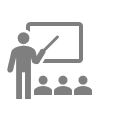 Years ago, when I worked with a psychology professor who was hoping to increase the percentage of students who earned C’s or above on his exams, we decide to interview students just before the test and record their answers to see if we could find patterns. The question we asked them was “what will be on the upcoming test?” We interviewed students who were earning every grade level– from A’s to F’s. Here are patterns we found:
Years ago, when I worked with a psychology professor who was hoping to increase the percentage of students who earned C’s or above on his exams, we decide to interview students just before the test and record their answers to see if we could find patterns. The question we asked them was “what will be on the upcoming test?” We interviewed students who were earning every grade level– from A’s to F’s. Here are patterns we found:
A and B students spoke about the test in terms of relationships. They said things like, “I need to know how this is different than that,” or “I need to know the causes of X.” They also noted that they would be a scenario and would have to apply what they learned to it. For example, they might read a brief scenario about a person’s behavior and, based on that determine what mental disorder that person likely had.
C students were a mixed bag of answers.
D and F students answered our questions in one of two ways. They said, “I don’t know what will be on the test. I haven’t taken it yet,” or they answered in lists. For example, if the chapter they were learning was on memory, they might answer by saying, “I’m going to have to know semantic, episodic, the hippocampus, and memory consolidation.”
The major conclusion we drew is that A and B students are “big picture” thinkers who see facts as tools to use to understand concepts, but the D and F students tended to see learning facts and an end in and of itself.
Kathryn
Resources:
There are two resources in the section:
- The 10 Day Study Plan
- Tips for Taking Exams
10 Day Study Plan
Overview
The Ten-Day Study Plan is designed to help students develop a process for studying for exams that avoids four major problems new college students have with test-taking– waiting until the last minute and then cramming, expecting the test to focus on definitions and facts, not knowing where to begin and not knowing how to determine what will be on the test. This resource helps students think through what is likely to on the test, evaluate their knowledge of specific concepts and think ahead to the questions they might be asked on an exam so they can prepare more effectively.
How It Helps
This resource helps students with the following aspects of executive functioning:
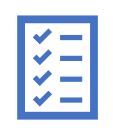 Task-initiation: This resource lays out specific tasks that students can follow to begin studying for their test. For students who feel overwhelmed and don’t know where to begin, this resource can provide a place to start as well as some guidance about next steps.
Task-initiation: This resource lays out specific tasks that students can follow to begin studying for their test. For students who feel overwhelmed and don’t know where to begin, this resource can provide a place to start as well as some guidance about next steps.
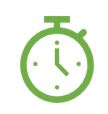 Time Management: This resource helps students “pace themselves” so they avoid cramming and marathon study sessions. It also helps them determine what parts of the content need the bulk of their time and what content they are confident in.
Time Management: This resource helps students “pace themselves” so they avoid cramming and marathon study sessions. It also helps them determine what parts of the content need the bulk of their time and what content they are confident in.
 Self-Monitoring: This resource helps students determine what they do and don’t know about the content, and how well they know it. It allows them to evaluate their knowledge of concepts before they begin reviewing and then after they review so students can measure their progress toward learning the material.
Self-Monitoring: This resource helps students determine what they do and don’t know about the content, and how well they know it. It allows them to evaluate their knowledge of concepts before they begin reviewing and then after they review so students can measure their progress toward learning the material.
Ten Day Study Plan
Many students think studying for an exam is something to be done the day or two before the exam. Some students will clear their schedules the day before an exam and devote an entire day to studying– but preparing for an exam is a bit like preparing for a game or a concert– working on it over a period of time is more effective. The Ten-Day Study Plan is a customizable study plan– turn it into a seven-day study plan for shorter tests, expand it to 14-day study plan for exams that cover multiple chapters. Skip steps you don’t find useful or change them to fit your course better.
Days 1 and 2: Gather information about the exam
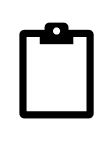 There is information about your exam you should know before you begin studying. Most instructors are happy to share information about their exams because they want students to be successful. Many post something on their D2L site, or discuss the test in class. Classmates might also know the answers. In any case, about 10 days before the exam, find answers to the questions below:
There is information about your exam you should know before you begin studying. Most instructors are happy to share information about their exams because they want students to be successful. Many post something on their D2L site, or discuss the test in class. Classmates might also know the answers. In any case, about 10 days before the exam, find answers to the questions below:
Format and Value
- What kind of questions will be on the exam? (i.e. will it be multiple choice? Short answer? Longer essays? A combination of question types?)
- How many questions will be on it? How many of each type? (i.e. 25 multiple choice questions and 3 short answer/ essay questions.)
- How many points is it worth and/or what percentage of your grade is it?
Setting and Circumstances
- Is your test timed? Y N If yes, how long do you have to take it?_______
- What day/time is it due? When can you start it?
- Is it in person or take home?
- If it is over Zoom, do you need to have your camera on to prove you are not cheating? Do you have the correct technology to take the test? (i.e. Does your camera work? Do you have a good, distraction-free place to take the test? Do you need to install a lock-down browser?)
- Can you use a study aid (cheat sheet, book, etc.) during the test? Y N If yes, what are the details? (For example, are you allowed to bring only a 3 X 5 Notecard? Note only? The book only?
Content
- Which chapters will you be responsible for knowing on the exam?
- Is there anything else you need to read to be ready for the exam? (Articles you were assigned, other books, etc.?) List them below.
- Are there videos, movies, taped lectures, etc. you need to watch to be ready for the exam? List them below.
- What role will lectures play in the exam? For example, does your instructor lecture right out of the book or do they use lecture to introduce new concepts to you in class? Will you be tested over what is said in lecture?
- What role will class activities play in the exam? (If you did class activities designed to help you understand an important concept, you are likely to be tested on it!)
NOTE: if you can’t find the answers to these questions on the D2L site or from classmates, make sure to ask your instructor.
Barriers
People are more successful when they name their concerns and come up with a plan to address them. What concerns you about studying for or taking this exam? Here are some options:
- Lack of time to study
- Having multiple tests the same week
- Test anxiety
- Fears you haven’t read the chapters carefully enough
- Concepts you still find confusing
- Poor performance on quizzes so far
- Other: ____________________________________________________
Days 3-6: Figure Out What You Know
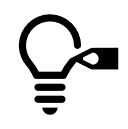
Flip to the ends of your textbook chapters, or wherever the authors have listed important concepts, learning objectives, etc. Determine which concepts, people, processes, etc. you remember and which ones you will need to review.
To keep yourself organized, try completing the concept chart below. Information about how to complete it is below the chart.
Chapter # _____
|
Section from the chapter (Write the heading) |
Concept column Make a college-level statement using the terms and concepts from your class. or copy learning objectives from your chapter. |
How would you rate your understanding of this concept? |
After review, how would you rate your understanding of this concept? |
|
|
|
|
|
|
|
|
|
|
|
|
|
|
|
How to Complete the Concept Chart
- Next to “Chapter #_____,” Write down which chapter these concepts are coming from so you can keep yourself organized.
- In “Column 1: Section of the Chapter,” write down chapter headings and/or subheadings so you know which part of the chapter these concepts came from. Also, write down page numbers so you can easily find information.
- In the “Concept Column” write three-seven concepts per chapter—but you can do more if you wish. When you complete the “Concept” part, don‘t just list terms. Instead read the college-level statements below. Notice that each statement asks you to do something with the terms and concepts in the chapter, and many of them ask you to think about how two or more terms or concepts relate.
Summarize how _____ happens
Explain how ____________ works
Explain the steps in ________ process
Name and explain the parts of _____________
Define _______ and list the reasons why ________________ is true/ false/ important
List the reasons why __________ happens.
Explain how _______ causes _________
- Decide which one or ones “fit” most closely with the information in the textbook. For example, if your chapter section in Biology is describing how the process of photosynthesis happens, then select the “Explain the steps in _______ process” and write something like, “Explain the steps in the process of photosynthesis” in the concept area.
TIP: Change the college level statements to better fit your material if you need to. The important thing to avoid is writing a bunch of “What is _______?” questions since those emphasize memorizing vocabulary and definitions and you are not likely to have to do that on an exam.
-
- Look at the college-level statements you made in the chart and consider whether you can DO what the statement is asking you to do. For example, if you have to list the steps in the process of photosynthesis, can you? If you need to explain how one president’s foreign policy differs from another one, can you?
- After you Read each statement you put in the “concept” column. Then, rate it based on your ability to DO what it is asking you to do. See the ratings below:
- 0= I don’t remember these concepts. I cannot do what this statement is asking me to do.
- 1= I barely remember these concepts. I could do what the statement is asking me to do, but not at all well.
- 2= I remember these concepts pretty well. I could do what the statement is asking me to do, but I might miss a couple important ideas.
- 3= I remember these concepts very well. If I were given the exam right now, I could do what the statement is asking me to do.
NOTE: Don’t just read your statement and say, “Oh, yeah, I can explain how one president’s foreign policy is different from this other one.” ACTUALLY EXPLAIN IT! It is easy enough to THINK you can do what your college-level statement says. It is another to be able to DO IT. Think of it like this: Can you sing your National Anthem? You probably think you can. After all, you’ve likely heard it multiple times. But if you try it, you might find you don’t remember it as well as you thought.
How to Review
When you review, start with the concepts with the lowest scores and use your notes, book and whatever tools are available to you to learn them. If necessary, check in with your instructor, or talk to a study buddy. After studying, reevaluate. Can you give yourself a higher score? Repeat this process until the majority of your numbers are 2 or 3. You can go chapter by chapter, or you can do this for each chapter and then review all at once.
Here is a review technique: pretend someone comes up to you at a party and makes a college level statement to you. (i.e. They ask you how the atmosphere on Earth is similar to or different from the atmospheres of Mars, Venus and Mercury.) If you can’t respond to the college level statement without looking at your books or notes or asking a friend, you likely don’t know it well enough to take an exam over it.
NOTE: Avoid googling people, concepts etc. since google definitions are often not detailed enough for your class, and/ or the terms you need to know might have other meanings.
Sample Completed Concept Chart
Here is a sample from Chapter 1 of a psychology textbook. The headings in the chapter are “Why Psychological Science Matters” and “The Scientific Method.”
Chapter 1
|
Section |
Concept column Make a college-level statement using the terms and concepts from your class. |
How would you rate your understanding of this concept? |
After review, how would you rate your understanding of this concept? |
|
Why Psychological Science Matters |
Define hindsight bias, overconfidence and perceiving order in random events and explain how they prevent people from thinking critically. |
2 |
3 |
|
The Scientific Method |
Describe the steps to using the scientific method Theory, hypothesis, operational definition, Replicate
|
1 |
3 |
Days 7-10: Brainstorm Study Questions
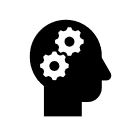 To get ready for your test, you need to practice at home what you will have to do on the exam. To do this, go back to the college-level statements you made in Days 2-7.
To get ready for your test, you need to practice at home what you will have to do on the exam. To do this, go back to the college-level statements you made in Days 2-7.
Below is that list of college level statements in case it is helpful to have them again.
Summarize how _____ happens
Explain how ____________ works
Explain the steps in ________ process
Name and explain the parts of _____________
Define _______ and list the reasons why ________________ is true/ false/ important
List the reasons why __________ happens.
Explain how _______ causes _________
Your exam can’t cover EVERY concept—particularly if you are taking a comprehensive test. Now, sort through the college-level statements you have written to decide which ones are the most likely to show up on an exam. Here are tips about how to do that:
Focus your energies on concepts, people and processes that:
- Your instructor told you are important
- That are both in your lecture notes AND in the book
- That you were tested on in previous exams
- Were emphasized in assignments or discussions
Some of this work may have been done for you already by your textbook. Does it have review questions? Chapter objective questions? Look them over for college-level test questions.
Reminder: Avoid writing test questions that begin with “What is . . .” Those questions lead you to memorize vocabulary works and definitions, which is not usually what you will be tested on. Try, as much as you can, to stick to the college level statements.
Complete the chart below:
|
Question Number |
Chapter |
College-Level Statements |
|
1 |
|
|
|
2 |
|
|
|
3 |
|
|
|
4 |
|
|
|
5 |
|
|
|
6 |
|
|
|
7 |
|
|
|
8 |
|
|
|
9 |
|
|
|
10 |
|
|
|
12 |
|
|
|
13 |
|
|
|
14 |
|
|
|
15 |
|
|
|
16 (If you want) |
|
|
Make this chart as long or as short as you would like to be. If you have a 50 point exam, it isn’t necessary to come up with 50 questions! Maybe 20 is plenty! Studying does require a certain amount of experimenting.
Next, go through your college-level statements and actually DO what they ask. Even if you already did this in days 2-6, do it again to make sure you still can.
If you follow these steps, you are more likely to be prepared to take and perform well on a college exam. Good luck!
Tips for Taking Exams
Overview
This resource will help students enter the test space with some strategies for taking the test itself. It is designed to help students avoid common problems with test-taking– like selecting the first multiple-choice answer they come to that seems right without reading all options, confusing the meanings of similar-sounding words, or becoming stymied when it seems all answers are “correct.”
How it Helps
This resource will help students with the following aspects of executive functioning:
 Self-Monitoring: this resource encourages students to slow down and develop a process for approaching exam items during the testing situation itself.
Self-Monitoring: this resource encourages students to slow down and develop a process for approaching exam items during the testing situation itself.
Tips for Taking Exams
You’ve done all your studying, and you think you are ready. The big day has come, and you are walking into the test. Now what? Below are tips to help you take the best test possible.
Multiple Choice Tests
Cover up the options. Stop just after you read the question, pretend it is a short answer question and see if you can answer it on your own. If you can, check to see if the answer you thought up is there. If so, it likely is the answer. Read the remaining options and see if any other options make sense before selecting your answer.
Write notes. Sometimes you are allowed to have blank paper to write, or if your test is given on paper, you can write on the exam. First, ask if you are able to write notes during the exam. If you are, you can jot down formulas, steps in processes etc. Those little notes, even though can jog your memory and even reduce nerves.
Pay attention to terms and words. Don’t confuse words like “hypoglycemia” and “hypothermia.” When you are nervous and pressed for time, you might read so fast you misread words and make assumptions.
Pick the best answer. Sometimes, when you read the options, it seems all of them are correct. Sometimes they are. Your job is to pick the best answer, since all of them might be right to some degree. Since there are so many topics and so many possible questions, there are no “hard and fast” rules about picking the right answer, but here are two ways to think about answers that might help in some cases.
- The “umbrella” answer: As you read options, does it seem like some answers might “fit under” another answer because they are examples of another answer or are specific parts of another answer? If so, then the broader answer is likely the best one. See the following silly question as an example:
You have just found out that you have a history test coming up and you know you will be tested on the lectures and on the book. What is the best way to study?
a. Review your lecture notes
b. Review major concepts from each of the chapter
c. Ask another student in the class to be your study partner
d. Develop a review plan that involves determining which concepts from the book and the lectures are likely to be on the exam.
A-C are all fine answers– but D incorporates both A and B, and possibly C, since there is no reason a review plan can’t involve a classmate.
- The 100% answer. when each answer seems correct, see if one answer is 100% correct. Re-read the answers to see if there are some that might be true 75% of the time, or 50% of the time, but not all of the time. See the following silly question as an example:
You are driving in Minnesota during the day when it begins to rain. What safety precautions should you take?
a. Turn on headlights
b. Drive slower than the speed limit
c. Pull over and put on hazard lights until it stops raining
d. Avoid driving through deep puddles or fast-moving water
A is the correct answer since that is Minnesota law. B-D are true in some circumstances. You might slow down or pull over if the rain is very heavy and reduces visibility. If there is enough rain to create flash-flood conditions, you will avoid driving through puddles or fast-moving water, but “rain” doesn’t always mean it will pour and create a dangerous situation.
Short Answer or Essay Tests
Don’t try to come up with witty introductions to your essays (In other words, forget the attention getter.) Your instructor knows you are pressed for time and won’t mind if you simply plunge in with what you have to say.
Use the “I” voice. You might want to ask ahead of time if you can write in the first person. (i.e. “I think . . . ” or “When I read . . . .” or “I will compare X and Y.”) But, again, your instructor isn’t expecting polished prose and likely will not mind if you write less formally than you would otherwise.
Forget grammar and spelling (to a point). You want your answers to be legible, and you don’t want to make so many errors your instructor won’t be able to understand your point, but don’t waste time worrying about grammar and spelling. (If your essay test is on a computer, auto-correct will likely help you out anyway.)
Add information if you need to. If your test is taken on a computer, it is easy to go back and add something you forgot. But if your test is taken the old-fashioned way with pen and paper, and you are just wrapping up your second paragraph when you realize you want to add something to your first one, do this: go back to the place in your essay where you want to add something. Draw an arrow out to the margins of your paper and carefully print what you forgot to add.
Write your answers as though someone who has some knowledge about the topic is going to read them. (Unless you are told otherwise.) For example, if you are writing an essay about how impressionism relates to other styles in your Art History class, you probably don’t need to define impressionism.
6.4 Ideas for Use: Test Preparation
If You Are a Tutor . . . .
- You can step through the “Ten-Day Study Plan” with your students and help them think through what parts of the study plan are helpful for them and which ones are not. After an exam, you can ask students what they would retain, change or add to how they study. Once they have a test behind them, you can ask them to use their experience, and the information on the 10 Day study plan to write down a step-by-step study plan they can follow.
- You can use the “Tips for Taking Tests” resource to help students consider what strategies might be helpful to them.
If You Are Faculty . . . .
- Make the Ten-Day Study Plan available to students on D2L. If you already do a review session, consider incorporating the Ten-Day Study Plan into it by encouraging students to complete parts of it prior to or during a review session. Complete a concept chart over one chapter as a sample.
- If you have a study guide, make sure it is aligned with the test. For example, if students will be asked to compare and contrast two concepts, then the study guide can indicate that. If the study guide says “Know concepts A and B” that might lead students to memorize concepts A and B, not to see the relationships between them.
- During class, or through an online video, use the College Level Questions to create a question or two and help students understand what knowledge they need to possess to answer the questions correctly.
- Give students a quiz that closely reflects what they will have to do on the exam, but instead of grading it, discuss correct answers and explain how students can use their books and other resources to develop the knowledge students will need to correctly answer the question.
- Customize the “Tips for Taking Tests” document with material from your own class. Add, delete or re-write parts of it to use language related to your content, and replace the sample questions with ones from your class.
Download Chapter 6 Resources
 Download chapter 6 resources as a Word Doc. Customize them to suit your students’ needs.
Download chapter 6 resources as a Word Doc. Customize them to suit your students’ needs.
Click here: Chapter 6 Test Preparation Resources
Media Attributions
- Download
- In Practice
- Task Initiation
- Time M
- Self-Monitoring
- Days 1 and 2
- Days 3-7
- Days 7-10

